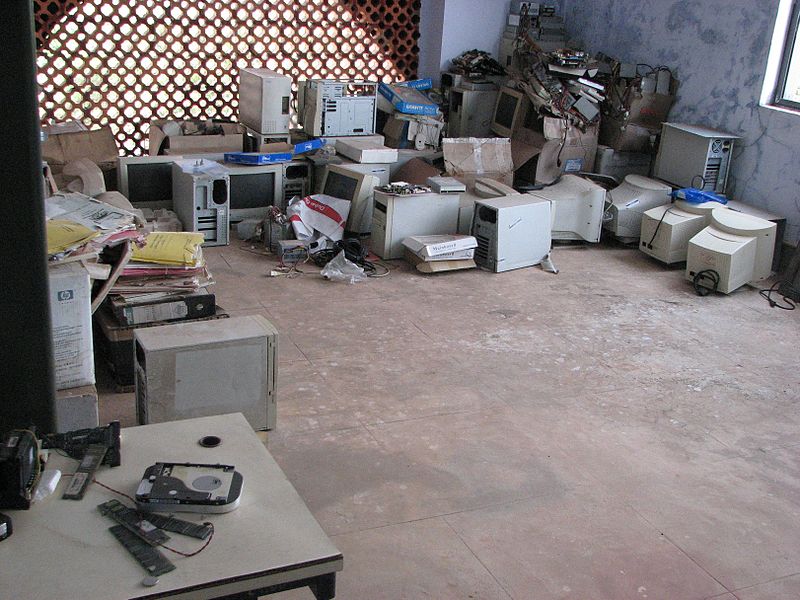The State of E-Waste Exports
When going out to buy new electronic equipment, people rarely think about what happens to their old equipment, referred to as e-waste. Globally, as much as 40 million tons of e-waste is generated each year, to be recycled, repaired and refurbished, or tossed into landfills.

A recent report from the United States International Trade Commission has adopted the following definition of e-waste, also known as used electronic products (or UEPs): "electronic products, including consumer electronics and IT equipment, that have reached the end of their useful life with the original owner."
The Trade Commission report surveyed 5,200 US businesses involved in the UEP industry. Out of the roughly 4.4 million tons of e-waste that was collected in the United States in 2011, nearly 83 percent was either repaired, dismantled, or recycled locally.
Most of the e-waste that was exported that same year was to be harvested, reused, recycled or resold. Only .8 percent of total US e-waste exports was sent overseas for "final disposal." The same "exported for final disposal" segment represents .13 percent of total collected US e-waste. More troubling, of the 757,721 tons of e-waste that was shipped overseas, 17.9 percent was for unknown purposes (3% out of the total 4.4 million tons).
The main criticism of e-waste exporting involves countries with lax or non-existent environmental standards. Examples of primitive and unsafe recovery or recycling methods, uncovered by the Seattle-based nongovernmental organization Basel Action Network, include:
- Bashing open cathode ray tubes with hammers, exposing the toxic phosphor dust inside.
- Cooking circuit boards in woks over open fires to melt the lead solder, releasing toxic lead fumes.
- Burning wires in open piles to melt away the plastics in order to recover the copper inside.
- Burning the plastic casings, creating dioxins and furans – extremely poisonous fumes.
- Discarding hazardous lead glass into former irrigation ditches.
- Dumping pure acids and dissolved heavy metals directly into waterways.
In 2002, the Basel Action Network claimed that as much as 80 percent of US e-waste was sent to developing nations, often via illegal channels. The group's activism led to multiple efforts to ban the US export of electronics to developing countries.
An article at Bloomberg is framing the Trade Commission report as a rebuttal of the earlier Basel Network claims. The author writes:
The biggest story embedded in the trade commission's story isn't that U.S. e-waste exports are greener than ever. Rather it is that the domestic electronics-recycling industry has grown into a large, mature business that views export as a second choice, not the first one.
Yet just last month, a CNN article referred to China as the "electronic wastebasket of the world."
Despite the incongruous reports and allegations, the e-waste stream is so large that even a small percentage of improperly disposed goods can have devastating environmental consequences. The good news is there appears to be growing support for sustainable e-waste measures. In May, the non-profit trade group, the Green Grid, joined forces with the UN-backed consortium Solving the E-waste Problem (StEP) to bring increased awareness to e-waste considerations.
Related Content:
The Green Grid Takes Giant StEP Towards E-Waste Leadership
Are You As Green As Your Neighbors?
EDE, Recycling, and a Discussion of TGG Metrics










